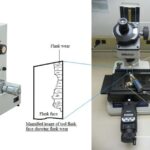AQA GCSE Biology 24 Views 1 Answers
Sourav PanLv 9November 12, 2024
How are lipid molecules formed from glycerol and fatty acids in metabolism?
How are lipid molecules formed from glycerol and fatty acids in metabolism?
Please login to save the post
Please login to submit an answer.
Sourav PanLv 9May 15, 2025
Lipid molecules, specifically triglycerides, are formed from glycerol and fatty acids through a series of enzymatic reactions in metabolism. Here’s a detailed overview of the process:
1. Formation of Glycerol-3-Phosphate
- Source of Glycerol: Glycerol can be derived from dietary fats or synthesized from glucose. In the latter case, glucose is converted to dihydroxyacetone phosphate (DHAP) during glycolysis. DHAP can then be reduced to glycerol-3-phosphate (G3P) by the enzyme glycerol-3-phosphate dehydrogenase.
- Glycerol Kinase: In the liver, glycerol can also be phosphorylated directly to G3P by the enzyme glycerol kinase, which is not present in adipose tissue.
2. Activation of Fatty Acids
- Conversion to Fatty Acyl-CoA: Fatty acids must be activated before they can be incorporated into triglycerides. This activation occurs in two steps:
- Fatty acids react with ATP to form acyl-adenylate (fatty acyl-AMP) and pyrophosphate (PPi).
- The acyl-adenylate then reacts with coenzyme A (CoA) to produce fatty acyl-CoA, which is the activated form of fatty acids ready for incorporation into lipids.
3. Synthesis of Triglycerides
- Esterification Process: The synthesis of triglycerides occurs primarily in the endoplasmic reticulum of liver and adipose tissue cells. The process involves the following steps:
- First Esterification: G3P reacts with one molecule of fatty acyl-CoA to form lysophosphatidic acid (LPA) through the action of the enzyme glycerol-3-phosphate acyltransferase (GPAT).
- Second Esterification: LPA is then acylated by another fatty acyl-CoA molecule to produce diacylglycerol (DAG).
- Third Esterification: Finally, a third fatty acyl-CoA molecule is added to DAG, resulting in the formation of triglyceride (triacylglycerol or TAG), with the release of water during this dehydration synthesis process.
4. Storage and Mobilization
- Storage: Once formed, triglycerides are stored in adipocytes (fat cells) as energy reserves. They can be mobilized when energy is needed through lipolysis, where triglycerides are broken down back into glycerol and free fatty acids.
- Hormonal Regulation: The synthesis and breakdown of triglycerides are regulated by hormones such as insulin (which promotes storage) and glucagon or epinephrine (which promote mobilization).
0
0 likes
- Share on Facebook
- Share on Twitter
- Share on LinkedIn
0 found this helpful out of 0 votes
Helpful: 0%
Helpful: 0%
Was this page helpful?




